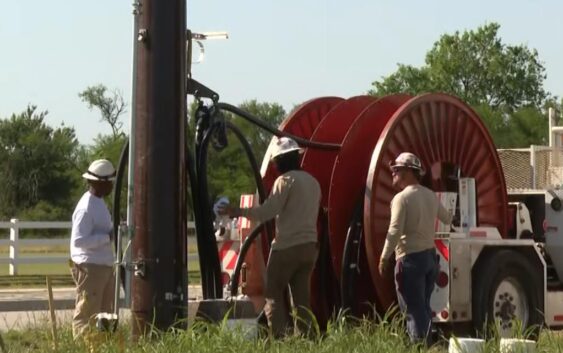- NC's FEMA aid extension for Hurricane Helene recovery denied
- NC's FEMA aid extension for Hurricane Helene recovery denied
- NC Gov. Stein pledges continued Hurricane Helene recovery support in 100-day address
- Austin adopts new map that greatly expands area at risk of wildfire
- CenterPoint Energy accelerates infrastructure improvements ahead of hurricane season
CenterPoint Energy accelerates infrastructure improvements ahead of hurricane season

CenterPoint Energy is fast-tracking infrastructure improvements before hurricane season after criticism over its response to Hurricane Beryl.
ROSENBERG, Texas — CenterPoint Energy is implementing significant changes to its power infrastructure following widespread criticism over its response to Hurricane Beryl last summer. The category 1 storm left approximately 2 million customers without power for a week or longer during intense summer heat, resulting in at least 15 heat-related deaths.
The energy provider, which faced an investigation by Texas Attorney General Ken Paxton after the botched response, is now fast-tracking improvements to be completed before this year’s hurricane season begins.
Crews were burying power lines in selected areas as part of the company’s multi-phase improvement plan. Crews worked in Rosenberg on FM 2218 Wednesday. However, Nathan Brownell, a CenterPoint representative, explained that underground lines aren’t a universal solution due to cost considerations.
“When we look at project per project, we’re trying to balance that cost and benefit to customers,” Brownell said. “On average, an underground line is much more expensive to bury that line than it is overhead. In some areas, we can provide the same level of reliability and resiliency by having overhead by installing hardened poles, like the composite poles that you see.”
According to Brownell, installing underground power lines costs approximately $7 million per mile, compared to just $350,000 per mile for above-ground lines. Given this substantial cost difference, CenterPoint is strategically burying lines only in non-flood prone areas that have dense vegetation that can’t be cleared or structures that might fall on power lines during storms.
In addition to selective underground line installation, crews are reinforcing existing above-ground poles and lines while continuing to clear tree limbs and branches that could potentially damage power infrastructure during severe weather.
CenterPoint has expressed confidence that it will complete this second phase of improvements by June 1, which coincides with the official start of hurricane season.
The company’s actions follow numerous town hall meetings where customers voiced strong criticism about the prolonged power outages during the scorching summer heat after Hurricane Beryl.